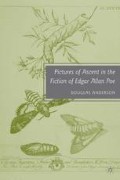Abstract
Poe’s interest in Roderick Usher’s conception of universal sentience takes overt, scientific form two years later in “The Island of the Fay,” a so-called plate article that he published in Graham’s Magazine for June 1841, one month after “A Descent into the Maelström” and two months after “The Murders in the Rue Morgue” had appeared in the same periodical. “The Colloquy of Monos and Una” would follow its three predecessors into the pages of Graham’s in August, presenting to the magazine’s readers, over a period of five months, a compact anthology of Poe’s artistic and philosophic interests. Nearly everything that he wrote both before and after this burst of activity in the spring and summer of 1841 could be classified under a heading identified with one of these four pieces—all pointing toward the linked interests in cosmology and consciousness that Poe systematically introduces, for the first time in his career, at the beginning of “The Island of the Fay.”
Access this chapter
Tax calculation will be finalised at checkout
Purchases are for personal use only
Preview
Unable to display preview. Download preview PDF.
Sources
The most extensive, recent treatment of Poe’s plate articles, including “The Island of the Fay,” is Louis Renza’s chapter in The American Face of Edgar Allan Poe, but Patrick Quinn’s discussion of “The Island of the Fay,” “The Oval Portrait,” and “The Fall of the House of Usher” in the last chapter of The French Face of Edgar Poe (pp. 257–275) is the best starting point for an appreciation of Poe’s ambitions in this unusual romantic excursion. Quinn cites Baudelaire’s perceptive grouping of his translations as the starting point for his own reflections. Lawrence Buell gives a concise and elegant summary of the conventions of the romantic ramble in Literary Transcendentalism (Ithaca, NY: Cornell Univ. Press, 1974).
T. O. Mabbott cites the 1832 letters from France that N. P. Willis sent to the New York Mirror reporting the mockery of cholera during the year’s Lenten masquerades in Collected Works of Edgar Allan Poe, 2.667-668. Heinrich Heine’s account of the outbreak of the disease at a masquerade ball is cited in François Delaporte’s book Disease and Civilization: The Cholera in Paris, 1832 (Cambridge, MA: MIT Press, 1986).
Recent critical considerations of “The Gold-Bug” have tended to be highly contextual in nature: those by Marc Shell in Money, Language and Thought: Literary and Philosophical Economies from the Medieval to the Modern Era (Berkeley: Univ. of California Press, 1982)
Lilane Weissberg offers a detailed consideration of the complex racial undercurrents in “The Gold-Bug” in her chapter, “Black, White, and Gold” from Romancing the Shadow: Poe and Race, eds. J. Gerald Kennedy and Lilane Weissberg (New York: Oxford Univ. Press, 2001), pp. 127–156.
Shawn Rosenheim’s ingenious account of “Secret Writing as Alchemy” in The Cryptographic Imagination (Baltimore: Johns Hopkins Univ. Press, 1997), pp. 42–64
Copyright information
© 2009 Douglas Anderson
About this chapter
Cite this chapter
Anderson, D. (2009). The Infected World at Large. In: Pictures of Ascent in the Fiction of Edgar Allan Poe. Palgrave Macmillan, New York. https://doi.org/10.1057/9780230100824_6
Download citation
DOI: https://doi.org/10.1057/9780230100824_6
Publisher Name: Palgrave Macmillan, New York
Print ISBN: 978-1-349-38223-1
Online ISBN: 978-0-230-10082-4
eBook Packages: Palgrave Literature & Performing Arts CollectionLiterature, Cultural and Media Studies (R0)

